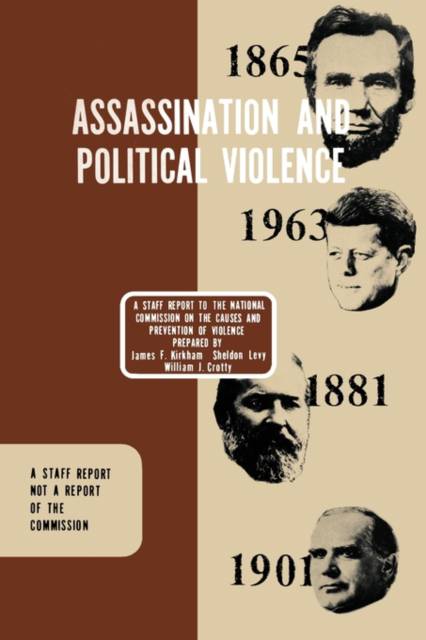
- Afhalen na 1 uur in een winkel met voorraad
- Gratis thuislevering in België vanaf € 30
- Ruim aanbod met 7 miljoen producten
- Afhalen na 1 uur in een winkel met voorraad
- Gratis thuislevering in België vanaf € 30
- Ruim aanbod met 7 miljoen producten
Zoeken
Assassination and Political Violence
A Report to the National Commission on the Causes and Prevention of Violence (1969)
James, Sheldon, William J Crotty
Paperback | Engels
€ 60,95
+ 121 punten
Omschrijving
Assassinations cast a long shadow on the history of the United States. Presidents, Congressmen, governors, mayors, state legislators, judges, and other prominent public figures all have been the targets of disturbed or fanatical individuals bent on murder as an expression of their real or imagined grievances. After every such occurrence, the press and the public express shock and demand explanations, hoping that an analysis of the cause may serve to prevent future killings, or at least help to develop better means to protect potential targets in the future. "Assassination and Political Violence", a staff study done at the request of the National Commission on the Causes and Prevention of Violence, is a comprehensive study of politically motivated violence and murder form the early days of the Republic to the late 1960's. After an introductory section devoted to a structural analysis of assassination, the book briefly discusses assassinations by type of office holder, followed by more detailed reviews of attacks on Presidents and Presidential candidates. It then examines the psychology of Presidential assassins, a psychiatric view of public reactions to assassinations, and a cross-national comparative study of assassinations, accompanied by numerous charts that compare the experience of countries around the world by specific variables, such as population size and political instability. A chapter on political violence in the United States provides a detailed overview of this phenomenon, taking into account regional, economic, racial, and other factors. Included are a number of illustrations of political propaganda pieces, such as a "Wanted" poster for President John F. Kennedy labeled "Wanted for TREASON" and another, of a Defense Department official, that includes his home address. An extensive appendix provides an exhaustive list of assassination events by country and a series of supplemental essays outline the history of political violence in various countries around the world. The information provided in Assassination and Political Violence makes it an indispensable source of data and analysis on the global reach of political murder, with a special emphasis on the American scene. As such it will be of great interest to scholars, law enforcement professionals, and anyone interested in the history and impact of assassination on the body politic. Originally published in 1969. illustrated.
Specificaties
Betrokkenen
- Auteur(s):
- Uitgeverij:
Inhoud
- Aantal bladzijden:
- 608
- Taal:
- Engels
Eigenschappen
- Productcode (EAN):
- 9781780391458
- Verschijningsdatum:
- 1/01/2011
- Uitvoering:
- Paperback
- Formaat:
- Trade paperback (VS)
- Afmetingen:
- 156 mm x 234 mm
- Gewicht:
- 839 g

Alleen bij Standaard Boekhandel
+ 121 punten op je klantenkaart van Standaard Boekhandel
Beoordelingen
We publiceren alleen reviews die voldoen aan de voorwaarden voor reviews. Bekijk onze voorwaarden voor reviews.











